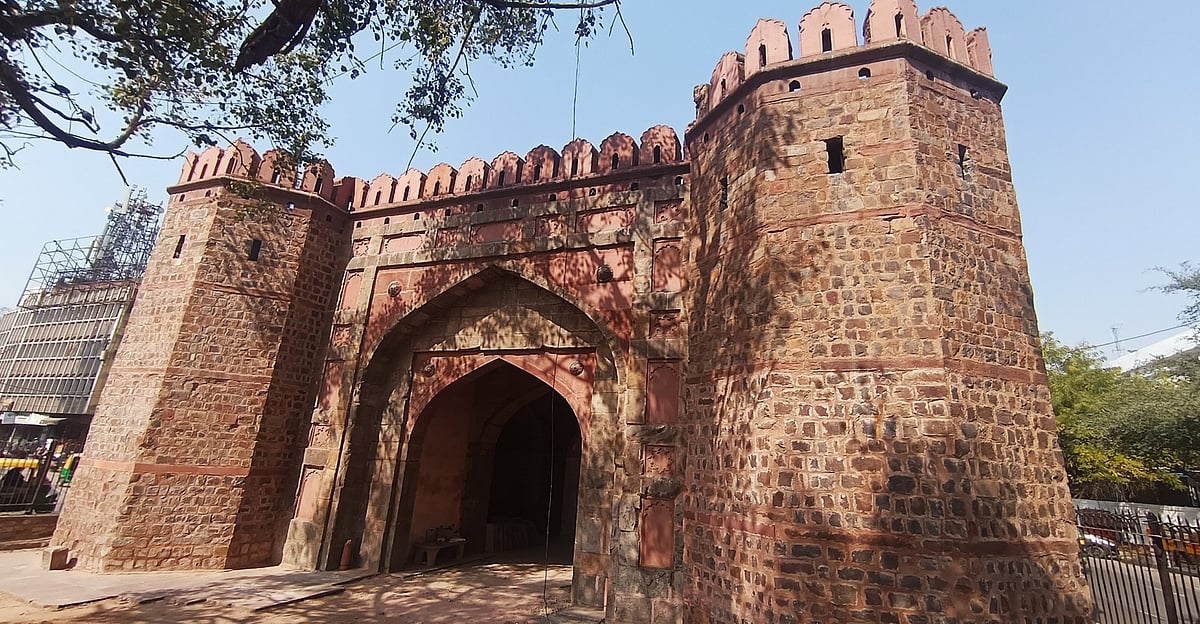In Photos: The Many Gates of Delhi
After the Mughals, the British assumed control. They established themselves in the gates constructed by emperors.

advertisement
With the advent of the Delhi Sultanate, the last dynasty of Tomara started to decline. This laid the groundwork for Mughal dominance in India until the British took control. The Mughals ruled for more than 200 years and established themselves through the gates and monuments they built.
The entrance of Kashmiri Gate.
It is so named because it represents the beginning of the route leading to Kashmir, on which the Emperor Shah Jahan used to travel.
(Photo: Iqra Hayat)
Kashimir Gate, from the inside.
In 1803, the British gradually erected their residential estates near the Kashmiri Gate, which had formerly held Mughal palaces and noble mansions.
(Photo: Iqra Hayat)
The rear of the Kashmiri gate.
(Photo: Iqra Hayat)
The southern gate of Delhi's walled city, Delhi Gate, is similar in design to the Kashmiri Gate. It connects Delhi's ancient and new cities and is built in the middle of the road.
The Delhi Gate.
Shah Jahan erected it to support the massive fort walls that ringed Shahjahanabad. He went to Jama Masjid through this gate.
(Photo: Iqra Hayat)
The Red Fort's primary entry gate is Lahori Gate. Shah Jahan commissioned Ustad Ahmad Lahori to build Lahori Gate after he completed the Taj Mahal in 1632. The building was finished in 1648 and was made of red and white marble since these were the Emperor's favourite colours.
The gate is named Lahori, because it led to the city of Lahore, presently Pakistan.
(Photo: Iqra Hayat)
Lahori Gate marks the entrance to the Red Fort.
(Photo: Iqra Hayat)
Within the Red Fort, there are various mahals, including Diwan-I-Aam.
It used to be a place where people would gather to hear the speech of Emperor Shah Jahan.
( Photo Credit: Iqra Hayat )
Purana Qila, near Pragati Maidan, was erected in 1538 by the second Mughal Emperors Humayun and Sher Shah Suri. During partition in August 1947, it operated as a refugee camp for people affected by the riots.
Emperor Humayun erected the main entrance to Purana Qila, known as Bada Darwaza. It's a 20-meter-high triple-storey construction.
(Photo: Iqra Hayat)
The walls of Bada Darwaza, which was previously an Emperor's Palace, are in poor shape and require repairs.
(Photo: Iqra Hayat)
Baoli or step well was the source of water for the people who lived in Purana Qila.
(Photo: Iqra Hayat)
Qila-E-Kuhna Masjid (The mosque of the old fort), inside Purana Qila built by Sher Shah Suri in 1541.
The prayer hall measures 51 meters by 15 meters and centre of the facade is 16.5 meters high.
(Photo: Iqra Hayat)
The Duke of Connaught laid the foundation stone for India Gate in 1921 in commemoration of the 84,000 British Indian Army personnel who died in the First World War.
It is one of India's most significant war memorials.
(Photo: Iqra Hayat)
The names of troops who perished in the First World War and the Third Anglo-American War are inscribed on the walls.
(Photo: Iqra Hayat)
On September 8, 2022 Prime Minister Narendra Modi erected a statue of Subhas Chandra Bose beneath the canopy behind India Gate.
(Photo: Iqra Hayat)
(At The Quint, we question everything. Play an active role in shaping our journalism by becoming a member today.)